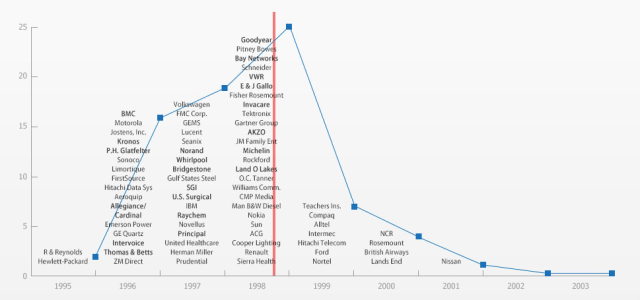SAP, the enterprise software behemoth dealt a $345 million penalty earlier this year in a patent case brought by Versata, has been given a window of opportunity in getting that case overturned, thanks to new rules in the America Invents Act concerning business method patents. SAP is the very first company to test out the new rules, part of some of the most significant reforms to the patent industry in years, which could potentially help turn around a system that has been much abused in the tech industry by both patent trolls but also legit companies.
Yesterday, SAP claimed a victory at the U.S. Patent and Trademark Office’s Patent Trial and Appeal Board over a business method patent around dynamic pricing technology, which Versata claims SAP infringed: the PTAB has now decided that that patent, number 6,553,350 (‘350), is unpatentable.
This is the very first case to be tried under the new rules for business method patents, which are part of the America Invents Act. Business method patents are used to describe certain processes, often found in software; the problem is that they often get enforced with what some believe are too-wide interpretations, so the America Invents Act included a clause in it to try to reform this by letting companies appeal to a board over how general the patent in question really is.
SAP literally filed its appeal the day the Act was approved in September 2012, and the success of striking down the business method patent in this particular case could set a precedent for how other companies opposing business method patents may proceed.
The full decision is embedded below, but the background to this particular case centers around the ‘350 patent. The case was first filed in 2007 by Versata, which claimed that software that it had created, and patented, to price items based on purchaser and other parameters, was effectively ripped off by SAP.
Versata’s claim was that it had a thriving market for its software, appropriately called Pricer. But then, when much-bigger SAP started to offer a product with similar features, business collapsed.
From its site:

After several stages of the case, with increasing fees levelled against SAP, the final ruling in May 2013 was for SAP to pay $345 million in damages.
That was, however, before this secondary appeal got seen by the PTAB. Erika Arner, a partner at IP law firm Finnegan, representing SAP, notes that the PTAB had determined that the ideas described in the patent were too abstract and general, and without “enough significant meaningful limitations to transform these abstract ideas into patent-eligible applications.” The PTAB, in fact, ruled all of Versata’s challenged claims unpatentable and therefore cancelled.
This, we understand, is just the first step for SAP in its attempt to turn the dispute in its favor. The USPTO is still considering whether to reexamine the patentability of Versata’s ‘350 patent in a separate ex-parte reexamination proceeding based on prior art, notes Arner.
And then comes the much bigger issue: whether SAP will be able to use these rulings to overturn the damages awarded to Versata. That case, before the Court of Appeals for the Federal Circuit Court, is still pending.
Update: we reached out to Versata to ask for a response for this story before we first published but have yet to get a comment. However, in a Bloomberg post, Scott Cole, of Versata’s legal firm McKool Smith, for now is (predictably) saying that success for SAP in the bigger patent case (the $345 million one) is unlikely:
“We can certainly expect an attempt to use this finding to reach from the grave on the case they already lost…There are a variety of reasons why we don’t think that will happen.” One of these is the advanced state of the existing patent suit. An appeal could take the whole case into another year of legal slogging.
Be that as it may, the SAP case, on another level, is the first demonstration of a company taking a business method to task under the new rules, and winning. Although apparently there have only been just over two dozen requests made for business method patent reviews since the rules came into effect, that could set a profile and precedent for more. (Or, it could spur the government to expand the review to cover other kinds of software patents, as Bloomberg notes.)
Business method patents are obviously not just the terrain of older companies, nor of trolls hoping to cash in on an existing, active company’s fortunes. Amazon owns a business method patent on the One-Click shopping cart.
The rules, however, will make it easier for companies who are on the receiving end of those suits to formally question whether those patents are too abstract and therefore unpatentable. That could be a slippery slope, however, for companies that use business method patents legitimately.
“We are supportive of patent reform that stops trolls, etc. but big believers that America needs software patents to protect the small entrepreneur,” one software executive noted to TechCrunch. “Some business method patents have clearly gone too far — One-Click, etc. — but if you actually look at Versata’s patent — saying it is too abstract to patent is tantamount to throwing out all software patents and that would be a mistake.”
There are other efforts being made to also help form more useful patent methodology, such as the combined effort of StackExchange and the USTPO to crowdsource prior art that can be used to determine the validity of patents.
